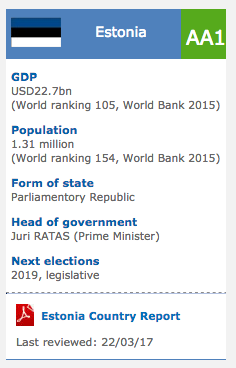Country Rating C3
|
Strengths
-
Government commitment to correct imbalances
-
Developed industrial fabric
-
Skilled workforce compared to the region
|
Weaknesses
-
Vulnerable to changes in agricultural prices
-
Macroeconomic imbalances and a weakened institutional framework
-
High inflation
|
ECONOMIC OVERVIEW
Getting the economy back on its feet
Argentina will be playing for high stakes in 2017. Politics-wise, President Macri will seek a majority in the mid-term legislative elections on October 22. The ruling coalition is currently in a minority position and has resorted to executive decrees. Confidence in the government and its reform agenda to address the inherited imbalances and weakened institutional framework remains resilient. This is despite the corrective measures that deepened the recession and postponed the recovery of the economy.
Real GDP contracted by -2.3% in 2016, compared to the average +3.3% recorded in the previous decade. On the one hand, exports and public consumption increased by +3.7% and +0.3%, respectively. On the other hand, private consumption and investment shrank correspondingly by -1.4% and -5.5%.
However, production increased by +0.5% q/q in Q4 2016 and the figure for the previous quarter was revised upwards from -0.2% q/q to +0.1% q/q. These recent releases support the view that Argentina is clearly bottoming out of recession. Investment is estimated to become the engine of growth in 2017 and push the economy back into positive territory. The needed fiscal consolidation has been partially postponed as social security expenditures and investment in public works add to approved tax cuts.
No smooth sailing on inflation
The Central Bank abandoned the LEBAC and adopted the 7-day repo as its key interest rate at the start of 2017. As inflation changed course, the Argentinian key policy interest rate could be decreased to 24.75%, down from the 38% peak registered in April. Inflation is expected to continue its descending path in the near-term. This should benefit corporates and SMEs as lower interest rates mean that borrowing from banks becomes cheaper.
However, in contrast to the downward trend initiated early in the year, consumer prices remained sticky the second half of 2016. This led to a prudent revision of market expectations for future cuts. Headwinds could come from potential second-round effects of changes in regulated prices, such as the reduction of subsidies to energy and increase in tariffs, and from a raise of the floor of wage demands. The Central Bank has set ambitious disinflation objectives that currently seem out of reach but signal the way forward.
Opening up doors
The return to international capital markets has enabled the Treasury to issue debt denominated in USD under favorable terms and has already virtually covered its financial needs for the year. In addition, the elimination of exchange rate restrictions earlier in the term in office led to a depreciation of the ARS and subsequent accommodation that facilitated the accumulation of international reserves.
Nonetheless, a moderate deterioration in terms of trade and an anticipated increase in international interest rates are non-trivial upside risks. Capital inflows could hamper the current account deficit correction. Yet it should fuel investment to gain momentum and result in the appreciation of the ARS in real terms.


















